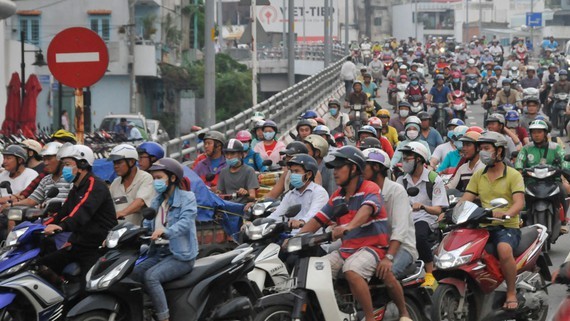
In Ho Chi Minh City there are over 7.2 million motorbikes and 0.8 million cars in use, and an additional of 888 motorbikes and 174 cars being registered each day, according to HCMC traffic police.
Authorities after years of improvement have managed to expand public bus systems in the city and raise the number of daily passengers to 1,500,000. The buses run 15 hours per day on average, and people can buy ticket books at a discount. There are also various bus routes supporting students and working class people, most of which operate on subsidies.
However, public buses only account for less than 10% of citizens’ travel needs. Experts believe their lack of appeal is due to their slow speed during rush hours, relatively high fares (account for 13% of HCMC average PCI), and shortage of bus stations, among other reasons.
Promoting public transport and limiting private vehicles at the same time requires huge funding and a lot of time, stated an official from the HCMC Department of Planning and Architecture. It might be possible if the city calls for investment from different sources, he added.
In the meantime, the city is very capable of adopting measures for smaller problems such as banning parking on the sidewalk, requiring street-facing stores to have reserved parking space for their customers, or having tolls for personal 4-wheel vehicles traveling into the city center.
One method of tolling could be environment fees on personal vehicles, but it might be met with oppositions since it is not an administrative approach, said former Head of the Transport Management Division under the HCMC Department of Transport Le Trung Tinh.
The city would have hundreds of billion more to offset the bus subsidies if environmental fees are applied, he added.
Since public buses only cover about 1,000 km out of 3,600 km of urban roads in HCMC, and there are small, narrow streets or alleys that buses cannot access, the restriction on personal vehicles needs to be done with care and with a reasonable approach.
According to Vietnam Automobile Transportation Association (VATA), the city should focus more on limiting personal 4-wheel vehicles instead of motorbikes since they only serve 10% of commuters but take up 55% of traffic space.
Statistics show that about 150,000 cars per day pass into District 1 and District 3, the two central areas in HCMC.
























